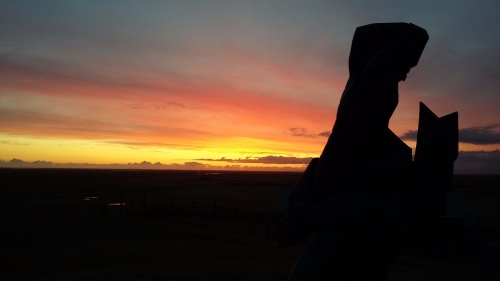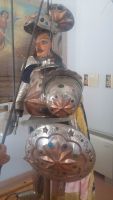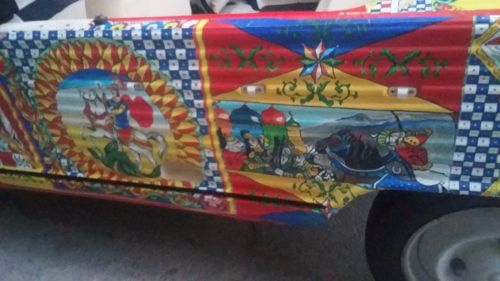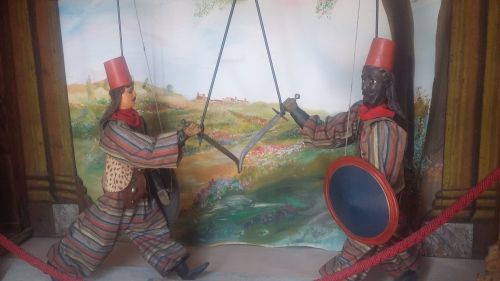A Hitch in Time
Posted on
Winds blasting my cheeks and the rain's like a hundred hosepipes all pointed right at me. Don't you just love Iceland! Most visitors are sensible – they hire a car and ride the ring-road, or they fork out on a tour bus. Iceland's geared to the super-wealthy: its infrastructure doesn't give much help to the penny-pincher. But fortunately the Icelanders are kinder. I'd be stuck at a T-junction, backpack resting by the signpost, or tramping along an empty dirt track, when a pick-up or SUV or a rattling jalopy would grind to a halt. 'Get yourself out of the rain!' I'd dump my pack, careful not to jolt the hunting rifle that often occupies the back seat, and settle in for the curious intimacy and goodwill that hitchhiking sparks.
'I'm off shooting,' said Auster, a sports teacher who was on the hunt for geese. 'I go for pinkfoots,' he explained, describing the hilltop lake where he'd set his sights. 'I can tell you about it, but I'd never tell anyone around here!'
Another time, I was tramping south from the Arctic Henge when two kindergarten teachers took pity on me:
'We're off to Akureyri to watch a movie,' they explained – they'd drive two hours there, another two back. 'But we're used to it. If you want to go anywhere in Iceland, you've got to drive.'
Tourists aren't as generous, put off by the horror movie image of hitch-hikers, axes in their packs, evil in their hearts. But Icelanders tend to recognise why you're walking the fens and heaths on your own – they know their country has little public transport, especially in the north, and it enjoys one of the lowest crime rates in the world (it tops the Global Peace Index, for example, with a particularly low murder rate – just 26 reported from 2000 to October 2014).
This is a land apart, hi-tech in many ways, but sustaining trust levels long lost to most regions, a country that muddles the past and future in strange patterns. But it's no utopia – I bumped into down-and-outs, bleeding from fist-fights, and refugees struggling with life in 'the freezer'. In the Laugar area, I was picked off the roadside by a kind engineer called Elfar, who beamed as I settled in beside him. 'Guess what,' he exclaimed, 'the government's fallen – the prime minister was covering up about his father supporting the pardoning of a paedophile. So now we're gonna have another election.'
He shook his head, recounting the recent spate of elections, a run of bad governance running back to the 2008 financial crash. 'I'm actually tired of voting,' he said, 'we get elections all the time, and it doesn't make things better.'
'Hmmm,' I said, 'I know the feeling!'
 Volcanoes and mafiosi - the go-to Sicilian stereotypes! But knights in shining armour? Battles with mere-wyverns, duels in the woods and courtly gatherings in stripy tents? I've never seen so many knights in one place! Granted, they're carved into the niches of churches, or painted on alley walls, chiselled and daubed all over Sicily's towns, brandishing tin swords with strings and metal rods gouged through their limbs. As far as Sicilian iconography goes, they're ubiquitous.
Volcanoes and mafiosi - the go-to Sicilian stereotypes! But knights in shining armour? Battles with mere-wyverns, duels in the woods and courtly gatherings in stripy tents? I've never seen so many knights in one place! Granted, they're carved into the niches of churches, or painted on alley walls, chiselled and daubed all over Sicily's towns, brandishing tin swords with strings and metal rods gouged through their limbs. As far as Sicilian iconography goes, they're ubiquitous. In the coastal town of Capo d'Orlando (named after a Carolingian knight who's the subject of a famous epic poem), I saw a pick-up truck parked in an alley, its bodywork covered in scenes of battling knights. There was Saint George (patron saint of knights, as well as the English!), impaling his dragon, Saracens in crescent-tipped turbans, cavaliers on white and red chargers, turreted castles on craggy blue hills. It was a modern up-date of the old painted horse-carts that used to trundle along the mule-tracks and byways of Sicily (they are one of the first sights noticed by Michael Corleone when he returns to Palermo in Mario Puzo's Godfather sequel, 'The Sicilian'), dazzling admirers with their colourful scenes.
In the coastal town of Capo d'Orlando (named after a Carolingian knight who's the subject of a famous epic poem), I saw a pick-up truck parked in an alley, its bodywork covered in scenes of battling knights. There was Saint George (patron saint of knights, as well as the English!), impaling his dragon, Saracens in crescent-tipped turbans, cavaliers on white and red chargers, turreted castles on craggy blue hills. It was a modern up-date of the old painted horse-carts that used to trundle along the mule-tracks and byways of Sicily (they are one of the first sights noticed by Michael Corleone when he returns to Palermo in Mario Puzo's Godfather sequel, 'The Sicilian'), dazzling admirers with their colourful scenes. The Sicilian passion for chivalric tales is best discovered in their 'opera dei pupi', puppet shows still played in several corners of the island. During my time in Sicily, I met half a dozen puppeteers, and heard many different explanations for their enduring art - which was established as entertainment not for children but for 'the poor'. 'The tales of the knights, this is Sicily,' one storyteller told me, framed in prototypes of puppets and theatrical backdrops. And they aren't so far away from those other Sicilian stereotypes - the mafiosi and the volcanoes. One of the most popular knights, Reynald, is nicknamed 'mafiosi'; you can still see the hilt of a 13th century assassin's sword on the door of the Archbishop's Palace in Palermo, a reminder that Cosa Nostra had plenty of precedents to take their inspiration from. As for the volcano - well, it's the wild unlikeliness of Sicily's landscape that, according to one local storyteller, has made it 'the island of myths', a place where anything can happen. Persephone can be abducted by Hades, the Cyclops can hurl his rocks at Odysseus, Merlin and King Arthur can roam here, and Roland can fight off an army of Moors. It's a land of stories, with many still to come. Meeting some of the Sicilian storytellers has been a thrill - and I'll be writing all about them in my new book.
The Sicilian passion for chivalric tales is best discovered in their 'opera dei pupi', puppet shows still played in several corners of the island. During my time in Sicily, I met half a dozen puppeteers, and heard many different explanations for their enduring art - which was established as entertainment not for children but for 'the poor'. 'The tales of the knights, this is Sicily,' one storyteller told me, framed in prototypes of puppets and theatrical backdrops. And they aren't so far away from those other Sicilian stereotypes - the mafiosi and the volcanoes. One of the most popular knights, Reynald, is nicknamed 'mafiosi'; you can still see the hilt of a 13th century assassin's sword on the door of the Archbishop's Palace in Palermo, a reminder that Cosa Nostra had plenty of precedents to take their inspiration from. As for the volcano - well, it's the wild unlikeliness of Sicily's landscape that, according to one local storyteller, has made it 'the island of myths', a place where anything can happen. Persephone can be abducted by Hades, the Cyclops can hurl his rocks at Odysseus, Merlin and King Arthur can roam here, and Roland can fight off an army of Moors. It's a land of stories, with many still to come. Meeting some of the Sicilian storytellers has been a thrill - and I'll be writing all about them in my new book.